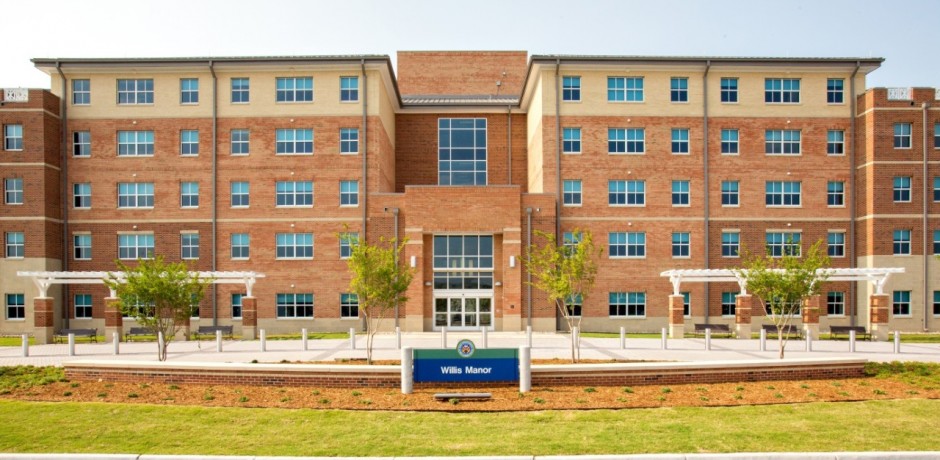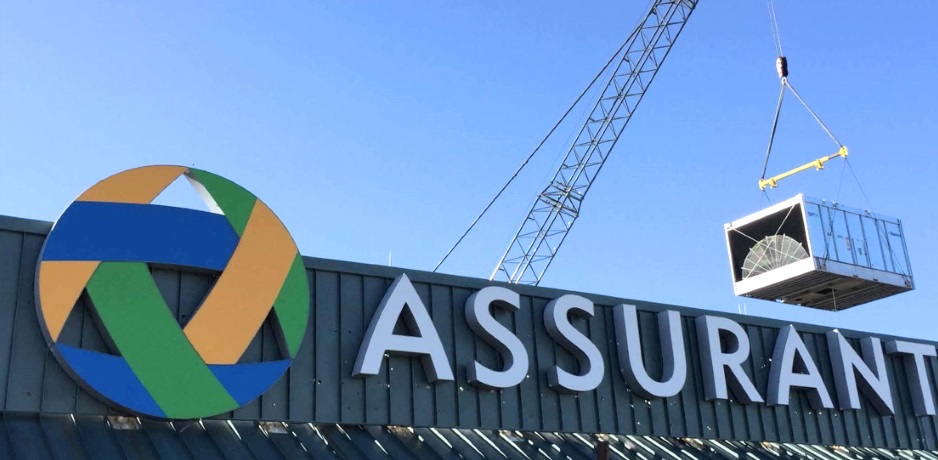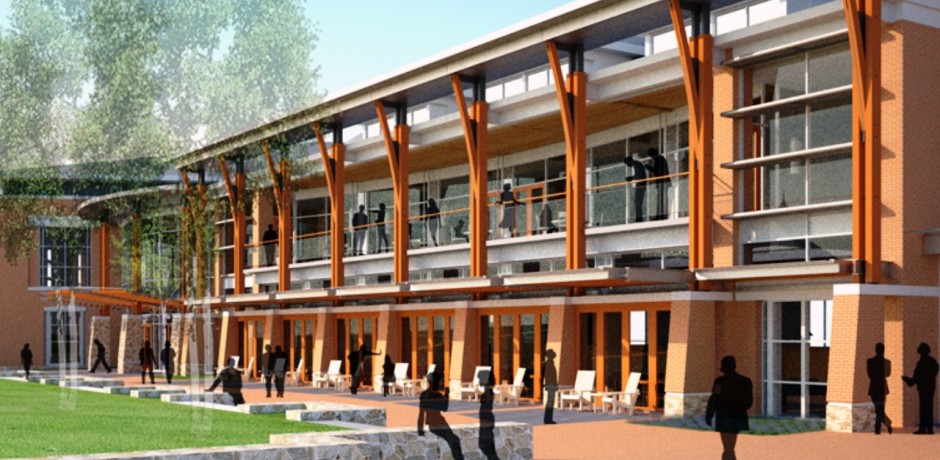Category: Energy
The pursuit of the Living Building Challenge pushes projects to be not just ‘less harmful’ to the environment, but to be at a minimum neutral and at its utmost, a ‘restorative’ impact to the environment.
The Living Building Challenge currently has over 200 projects registered in 14 countries, including the United States, Canada, China, India, Mexico, Haiti, Lebanon, France, Romania, Australia, and New Zealand, in various stages of design, construction, and occupancy.
Similar to LEED, it is a holistic approach to the building design but pushes the boundaries by achieving net positive energy, net positive water, and paying careful consideration to the materials used. Site, equity, beauty, health, and process are also critical components incorporated into the design. more
Willis Manor, named for the WWII Medal of Honor Winner, was procured as Design-Build P-123 Bachelor Quarters, Homeport Ashore Norfolk Naval Station (N40085-11-C-4572). The Clark Construction/LS3P design team was awarded the project as the first NAVFAC MIDLANT project evaluated for Total Ownership Cost (TOC). For the design-build team, P-123 represents the culmination of 12 years of involvement in design-build competition and delivery for NAVFAC and USACE. Many Clark Construction/LS3P projects have included BEQs and barracks, and the team has developed a wealth of knowledge in appropriate systems selection and implementation. more
Two years ago, I was invited to visit the Atlanta corporate campus of Assurant, Inc. to discuss their Energy Star score – it was too low and they wanted to do something about it. The twelve story office building was burdened by a chiller plant that was all original construction. Chillers, pumps, and cooling towers were well-maintained, but after more than 27 years of service, they were showing their age and not performing at the level they once did. This initial meeting unofficially began design efforts that have resulted in the recent completion of a $5.7 million upgrade to the HVAC and Electrical systems, a construction project that already has proven itself with lower electrical bills that bring a smile to Tony Ring, Manager of Maintenance Operations for Assurant. more
In simplest terms, Net Zero Energy (NZE) buildings produce as much energy as they consume. However, it isn’t enough to design and build a net zero energy building. Long term success is based on the interdependence and collaboration between design, construction, operations and occupant behavior. more
The American Institute of Architects (AIA) and its Committee on the Environment (COTE) have selected New Orleans Bio Innovation Center (NOBIC) as one of the year’s top Ten examples of sustainable architecture and ecological design projects that protect and enhance the environment. The project will be honored at the AIA 2015 National Convention and Design Exposition in Atlanta. more
Micro-electro-mechanical systems (MEMS) were invented in the second half of the past century and since then their use has been growing rapidly. The automobile industry was an early adopter, using MEMS sensors for automobile navigation, tire pressure control, and airbag deployment. As we start transitioning from today’s buildings and systems to future smart buildings, design engineers will have a wide variety of MEMS applications to choose from. more
Selecting and specifying the optimal HVAC system to meet the Owner’s Project Requirements is critical to the success of a high performance project. more
In my earlier columns, I tried to explain the concept of uncertainty analysis and also draw the attention of the industry to the advantages of performing probabilistic energy modeling. One of the most valuable complementary tools to uncertainty analysis is sensitivity analysis. Terje Aven in his book, Foundation of Risk Analysis,1 gives the following definition for sensitivity analysis: “A sensitivity analysis is a study of how sensitive the risk is with respect to changes in input parameter of risk model.” more
Building an energy-efficient building often begins with an energy (cost) comparison between a design building and an imaginary baseline building as defined in ASHRAE/IES Standard 90.1, Appendix G. Even though this method has contributed to higher performance of buildings and systems, I believe we can do better than that. more
In my November column, I discussed the necessity of performing a probabilistic energy modeling process instead of a deterministic one for an ASHRAE/IES Standard 90.1, Appendix G, design building. To be able to run a probabilistic energy model, the first step is to develop a tolerance margin library for all the construction material that would be used in constructing a building and for its associated equipment. more







